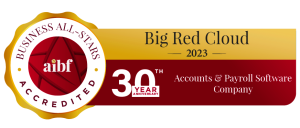Running in the family
Helping your children understand the financial aspects of your business is a great starting point for creating an enterprise that is capable of lasting into the next generation and beyond.
Most cultures have a variation of the expression ‘shirtsleeves to shirtsleeves in three generations’, meaning the first generation creates the wealth from nothing, the second generation spends it and the third generation ends up with nothing.
Many of you will want to create something you can pass on to your children. But research suggests less than a third of family businesses make it through the second generation and only one in eight make it to the end of the third generation.
Yet there is also plenty of research to suggest family-owned businesses are more successful than their non-family competitors. So what are the key steps in creating a business that can survive and thrive after you have handed over the reins?
Kids, we need to talk
The first thing to do is find out whether your kids actually want to get involved. Encouraging them to ask questions about the business from an early age will make them feel part of it and help you all figure out whether it is what they really want to do.
If they are enthusiastic, work experience is a good way of learning the ropes. Don’t show them any favouritism or work them harder than anyone else – give them a range of tasks and measure their performance objectively.
As they get older they may benefit from working outside the family business to broaden their knowledge and develop leadership skills.
Planning ahead is vital. Children with entrepreneurial skills and ambition will not hang around for ever while you decide when you want to hand over control, so a clear succession plan will help everyone understand when the transition will take place.
Why are you doing this?
A family business ‘constitution’ will help you decide what kind of enterprise you want to be and help answer questions such as:
- How do we measure success (both financial and emotional)?
- Who can own a share of the business?
- How do we settle disputes?
You may choose to give children who are not directly involved in the business a say in major decisions. This document should therefore set out guidelines for family meetings where all issues relating to the business can be discussed.
In many family business tensions arise over succession and the reluctance of parents to discuss their retirement plans. For example, the next generation may assume they will inherit the business while their parents will be expecting to be bought out, which may involve external loans or investment.
Don’t be afraid to ask for help
The best way for children to learn family business values is from their parents, but even the most successful family cannot do everything in-house. Employing non-family directors is a good way of filling skills gaps as well as getting an outside view.
You should also consider introducing the next generation to a financial advisor who could guide them through their life in business.
This advisor could be your accountant, but if not they still have a role to play. Entrepreneurs like to work with like-minded people, but they sometimes need a dose of reality when they have a bad idea.
The best way to familiarise your children with your business is to show them your accounts. Using Big Red Cloud makes it easy for the next generation to understand incomings and outgoings and get a real sense of what it takes to be successful.





